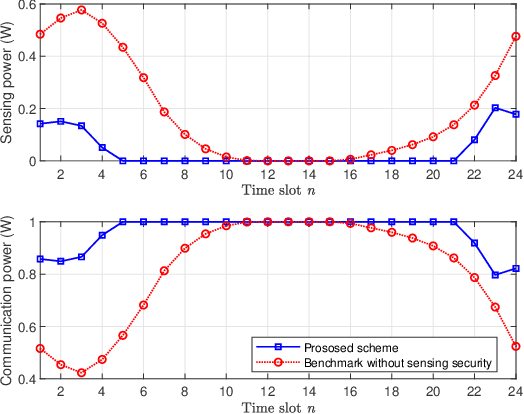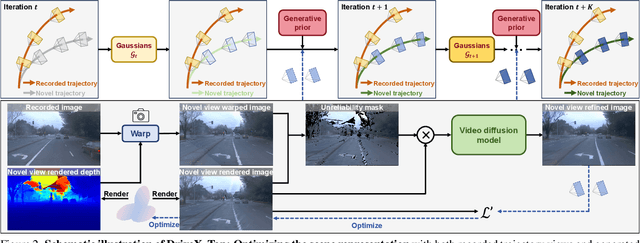Zeyu Yang
SASST: Leveraging Syntax-Aware Chunking and LLMs for Simultaneous Speech Translation
Aug 11, 2025Abstract:This work proposes a grammar-based chunking strategy that segments input streams into semantically complete units by parsing dependency relations (e.g., noun phrase boundaries, verb-object structures) and punctuation features. The method ensures chunk coherence and minimizes semantic fragmentation. Building on this mechanism, we present SASST (Syntax-Aware Simultaneous Speech Translation), an end-to-end framework integrating frozen Whisper encoder and decoder-only LLM. The unified architecture dynamically outputs translation tokens or <WAIT> symbols to jointly optimize translation timing and content, with target-side reordering addressing word-order divergence. Experiments on CoVoST2 multilingual corpus En-{De, Zh, Ja} demonstrate significant translation quality improvements across languages and validate the effectiveness of syntactic structures in LLM-driven SimulST systems.
LiDARDustX: A LiDAR Dataset for Dusty Unstructured Road Environments
May 28, 2025Abstract:Autonomous driving datasets are essential for validating the progress of intelligent vehicle algorithms, which include localization, perception, and prediction. However, existing datasets are predominantly focused on structured urban environments, which limits the exploration of unstructured and specialized scenarios, particularly those characterized by significant dust levels. This paper introduces the LiDARDustX dataset, which is specifically designed for perception tasks under high-dust conditions, such as those encountered in mining areas. The LiDARDustX dataset consists of 30,000 LiDAR frames captured by six different LiDAR sensors, each accompanied by 3D bounding box annotations and point cloud semantic segmentation. Notably, over 80% of the dataset comprises dust-affected scenes. By utilizing this dataset, we have established a benchmark for evaluating the performance of state-of-the-art 3D detection and segmentation algorithms. Additionally, we have analyzed the impact of dust on perception accuracy and delved into the causes of these effects. The data and further information can be accessed at: https://github.com/vincentweikey/LiDARDustX.
seg2med: a segmentation-based medical image generation framework using denoising diffusion probabilistic models
Apr 12, 2025



Abstract:In this study, we present seg2med, an advanced medical image synthesis framework that uses Denoising Diffusion Probabilistic Models (DDPM) to generate high-quality synthetic medical images conditioned on anatomical masks from TotalSegmentator. The framework synthesizes CT and MR images from segmentation masks derived from real patient data and XCAT digital phantoms, achieving a Structural Similarity Index Measure (SSIM) of 0.94 +/- 0.02 for CT and 0.89 +/- 0.04 for MR images compared to ground-truth images of real patients. It also achieves a Feature Similarity Index Measure (FSIM) of 0.78 +/- 0.04 for CT images from XCAT. The generative quality is further supported by a Fr\'echet Inception Distance (FID) of 3.62 for CT image generation. Additionally, seg2med can generate paired CT and MR images with consistent anatomical structures and convert images between CT and MR modalities, achieving SSIM values of 0.91 +/- 0.03 for MR-to-CT and 0.77 +/- 0.04 for CT-to-MR conversion. Despite the limitations of incomplete anatomical details in segmentation masks, the framework shows strong performance in cross-modality synthesis and multimodal imaging. seg2med also demonstrates high anatomical fidelity in CT synthesis, achieving a mean Dice coefficient greater than 0.90 for 11 abdominal organs and greater than 0.80 for 34 organs out of 59 in 58 test cases. The highest Dice of 0.96 +/- 0.01 was recorded for the right scapula. Leveraging the TotalSegmentator toolkit, seg2med enables segmentation mask generation across diverse datasets, supporting applications in clinical imaging, data augmentation, multimodal synthesis, and diagnostic algorithm development.
4D Gaussian Splatting: Modeling Dynamic Scenes with Native 4D Primitives
Dec 30, 2024



Abstract:Dynamic 3D scene representation and novel view synthesis from captured videos are crucial for enabling immersive experiences required by AR/VR and metaverse applications. However, this task is challenging due to the complexity of unconstrained real-world scenes and their temporal dynamics. In this paper, we frame dynamic scenes as a spatio-temporal 4D volume learning problem, offering a native explicit reformulation with minimal assumptions about motion, which serves as a versatile dynamic scene learning framework. Specifically, we represent a target dynamic scene using a collection of 4D Gaussian primitives with explicit geometry and appearance features, dubbed as 4D Gaussian splatting (4DGS). This approach can capture relevant information in space and time by fitting the underlying spatio-temporal volume. Modeling the spacetime as a whole with 4D Gaussians parameterized by anisotropic ellipses that can rotate arbitrarily in space and time, our model can naturally learn view-dependent and time-evolved appearance with 4D spherindrical harmonics. Notably, our 4DGS model is the first solution that supports real-time rendering of high-resolution, photorealistic novel views for complex dynamic scenes. To enhance efficiency, we derive several compact variants that effectively reduce memory footprint and mitigate the risk of overfitting. Extensive experiments validate the superiority of 4DGS in terms of visual quality and efficiency across a range of dynamic scene-related tasks (e.g., novel view synthesis, 4D generation, scene understanding) and scenarios (e.g., single object, indoor scenes, driving environments, synthetic and real data).
UAV-Enabled Secure ISAC Against Dual Eavesdropping Threats: Joint Beamforming and Trajectory Design
Dec 27, 2024



Abstract:In this work, we study an unmanned aerial vehicle (UAV)-enabled secure integrated sensing and communication (ISAC) system, where a UAV serves as an aerial base station (BS) to simultaneously perform communication with a user and detect a target on the ground, while a dual-functional eavesdropper attempts to intercept the signals for both sensing and communication. Facing the dual eavesdropping threats, we aim to enhance the average achievable secrecy rate for the communication user by jointly designing the UAV trajectory together with the transmit information and sensing beamforming, while satisfying the requirements on sensing performance and sensing security, as well as the UAV power and flight constraints. To address the non-convex nature of the optimization problem, we employ the alternating optimization (AO) strategy, jointly with the successive convex approximation (SCA) and semidefinite relaxation (SDR) methods. Numerical results validate the proposed approach, demonstrating its ability to achieve a high secrecy rate while meeting the required sensing and security constraints.
Double-Exponential Increases in Inference Energy: The Cost of the Race for Accuracy
Dec 12, 2024



Abstract:Deep learning models in computer vision have achieved significant success but pose increasing concerns about energy consumption and sustainability. Despite these concerns, there is a lack of comprehensive understanding of their energy efficiency during inference. In this study, we conduct a comprehensive analysis of the inference energy consumption of 1,200 ImageNet classification models - the largest evaluation of its kind to date. Our findings reveal a steep diminishing return in accuracy gains relative to the increase in energy usage, highlighting sustainability concerns in the pursuit of marginal improvements. We identify key factors contributing to energy consumption and demonstrate methods to improve energy efficiency. To promote more sustainable AI practices, we introduce an energy efficiency scoring system and develop an interactive web application that allows users to compare models based on accuracy and energy consumption. By providing extensive empirical data and practical tools, we aim to facilitate informed decision-making and encourage collaborative efforts in developing energy-efficient AI technologies.
Driving Scene Synthesis on Free-form Trajectories with Generative Prior
Dec 02, 2024



Abstract:Driving scene synthesis along free-form trajectories is essential for driving simulations to enable closed-loop evaluation of end-to-end driving policies. While existing methods excel at novel view synthesis on recorded trajectories, they face challenges with novel trajectories due to limited views of driving videos and the vastness of driving environments. To tackle this challenge, we propose a novel free-form driving view synthesis approach, dubbed DriveX, by leveraging video generative prior to optimize a 3D model across a variety of trajectories. Concretely, we crafted an inverse problem that enables a video diffusion model to be utilized as a prior for many-trajectory optimization of a parametric 3D model (e.g., Gaussian splatting). To seamlessly use the generative prior, we iteratively conduct this process during optimization. Our resulting model can produce high-fidelity virtual driving environments outside the recorded trajectory, enabling free-form trajectory driving simulation. Beyond real driving scenes, DriveX can also be utilized to simulate virtual driving worlds from AI-generated videos.
"Stupid robot, I want to speak to a human!" User Frustration Detection in Task-Oriented Dialog Systems
Nov 26, 2024



Abstract:Detecting user frustration in modern-day task-oriented dialog (TOD) systems is imperative for maintaining overall user satisfaction, engagement, and retention. However, most recent research is focused on sentiment and emotion detection in academic settings, thus failing to fully encapsulate implications of real-world user data. To mitigate this gap, in this work, we focus on user frustration in a deployed TOD system, assessing the feasibility of out-of-the-box solutions for user frustration detection. Specifically, we compare the performance of our deployed keyword-based approach, open-source approaches to sentiment analysis, dialog breakdown detection methods, and emerging in-context learning LLM-based detection. Our analysis highlights the limitations of open-source methods for real-world frustration detection, while demonstrating the superior performance of the LLM-based approach, achieving a 16\% relative improvement in F1 score on an internal benchmark. Finally, we analyze advantages and limitations of our methods and provide an insight into user frustration detection task for industry practitioners.
DeepInteraction++: Multi-Modality Interaction for Autonomous Driving
Aug 09, 2024



Abstract:Existing top-performance autonomous driving systems typically rely on the multi-modal fusion strategy for reliable scene understanding. This design is however fundamentally restricted due to overlooking the modality-specific strengths and finally hampering the model performance. To address this limitation, in this work, we introduce a novel modality interaction strategy that allows individual per-modality representations to be learned and maintained throughout, enabling their unique characteristics to be exploited during the whole perception pipeline. To demonstrate the effectiveness of the proposed strategy, we design DeepInteraction++, a multi-modal interaction framework characterized by a multi-modal representational interaction encoder and a multi-modal predictive interaction decoder. Specifically, the encoder is implemented as a dual-stream Transformer with specialized attention operation for information exchange and integration between separate modality-specific representations. Our multi-modal representational learning incorporates both object-centric, precise sampling-based feature alignment and global dense information spreading, essential for the more challenging planning task. The decoder is designed to iteratively refine the predictions by alternately aggregating information from separate representations in a unified modality-agnostic manner, realizing multi-modal predictive interaction. Extensive experiments demonstrate the superior performance of the proposed framework on both 3D object detection and end-to-end autonomous driving tasks. Our code is available at https://github.com/fudan-zvg/DeepInteraction.
TWIN V2: Scaling Ultra-Long User Behavior Sequence Modeling for Enhanced CTR Prediction at Kuaishou
Jul 23, 2024



Abstract:The significance of modeling long-term user interests for CTR prediction tasks in large-scale recommendation systems is progressively gaining attention among researchers and practitioners. Existing work, such as SIM and TWIN, typically employs a two-stage approach to model long-term user behavior sequences for efficiency concerns. The first stage rapidly retrieves a subset of sequences related to the target item from a long sequence using a search-based mechanism namely the General Search Unit (GSU), while the second stage calculates the interest scores using the Exact Search Unit (ESU) on the retrieved results. Given the extensive length of user behavior sequences spanning the entire life cycle, potentially reaching up to 10^6 in scale, there is currently no effective solution for fully modeling such expansive user interests. To overcome this issue, we introduced TWIN-V2, an enhancement of TWIN, where a divide-and-conquer approach is applied to compress life-cycle behaviors and uncover more accurate and diverse user interests. Specifically, a hierarchical clustering method groups items with similar characteristics in life-cycle behaviors into a single cluster during the offline phase. By limiting the size of clusters, we can compress behavior sequences well beyond the magnitude of 10^5 to a length manageable for online inference in GSU retrieval. Cluster-aware target attention extracts comprehensive and multi-faceted long-term interests of users, thereby making the final recommendation results more accurate and diverse. Extensive offline experiments on a multi-billion-scale industrial dataset and online A/B tests have demonstrated the effectiveness of TWIN-V2. Under an efficient deployment framework, TWIN-V2 has been successfully deployed to the primary traffic that serves hundreds of millions of daily active users at Kuaishou.
 Add to Chrome
Add to Chrome Add to Firefox
Add to Firefox Add to Edge
Add to Edge